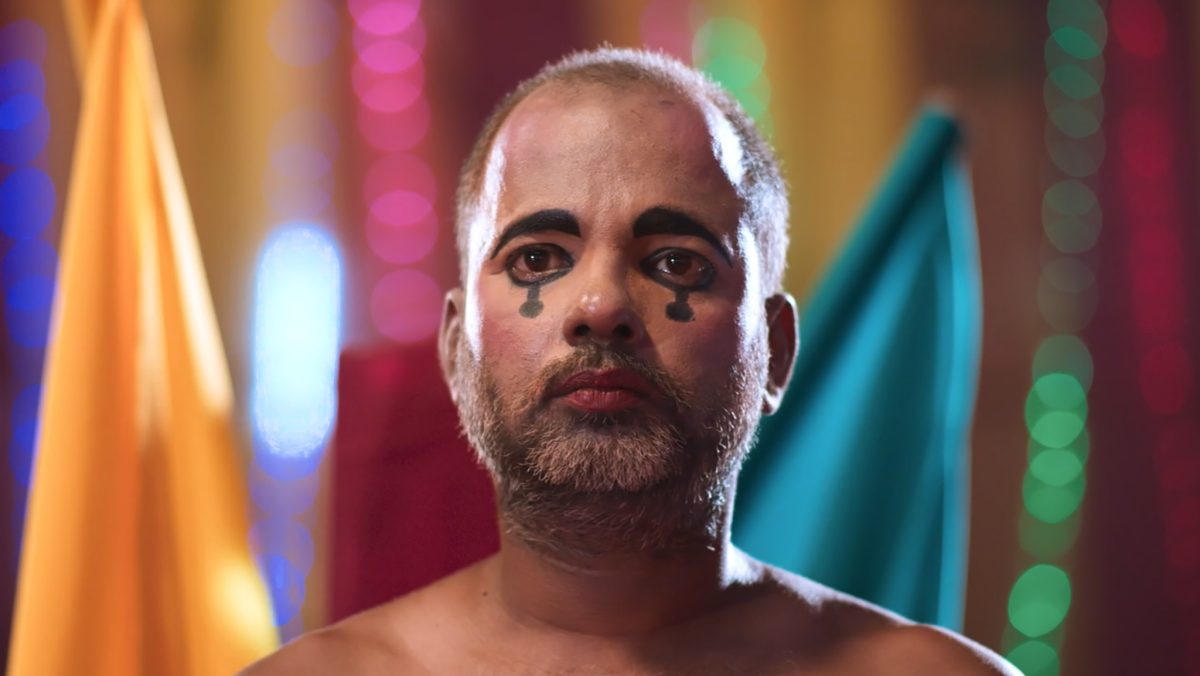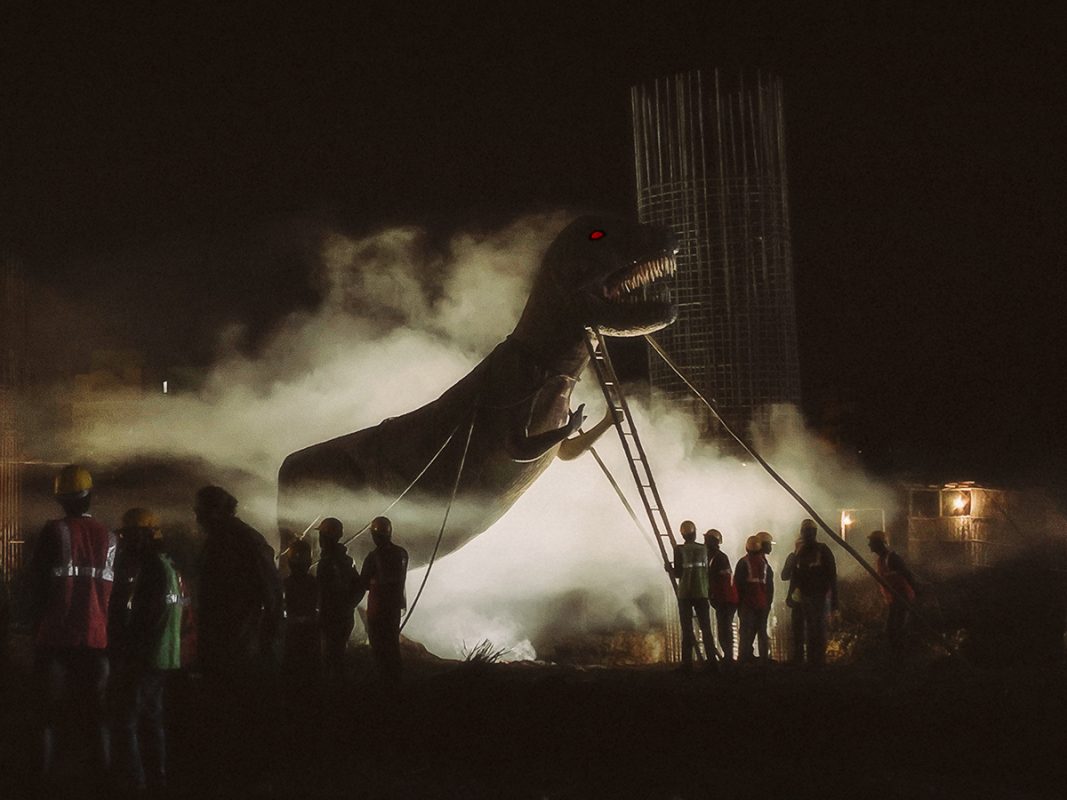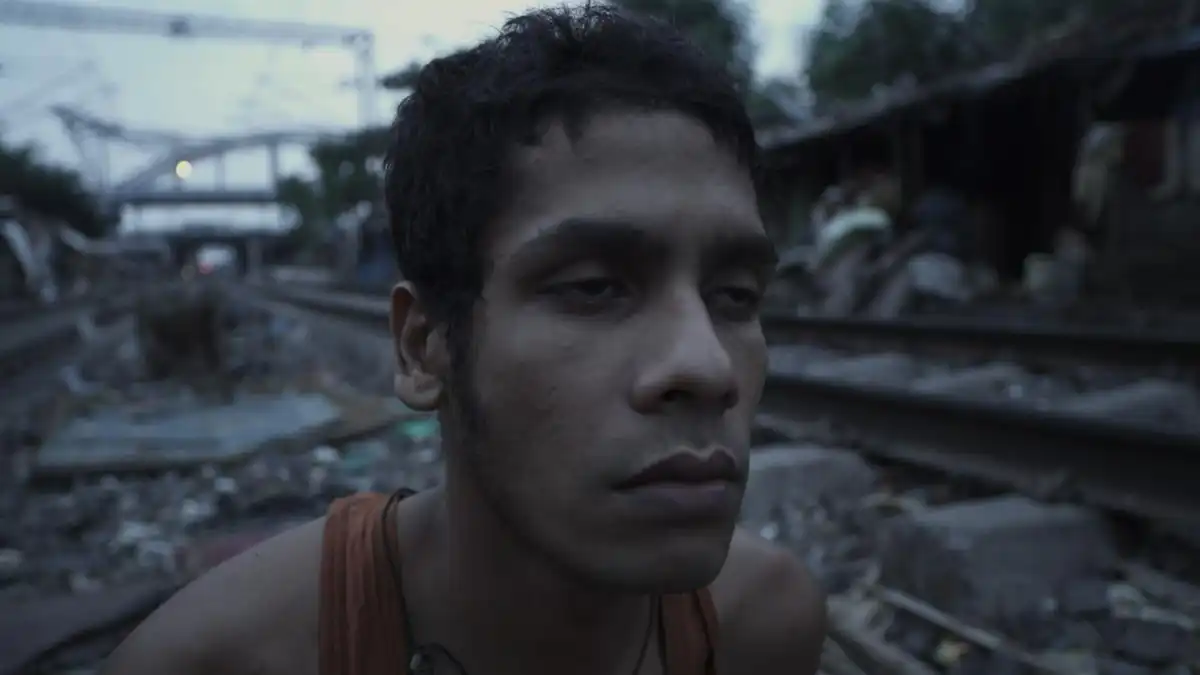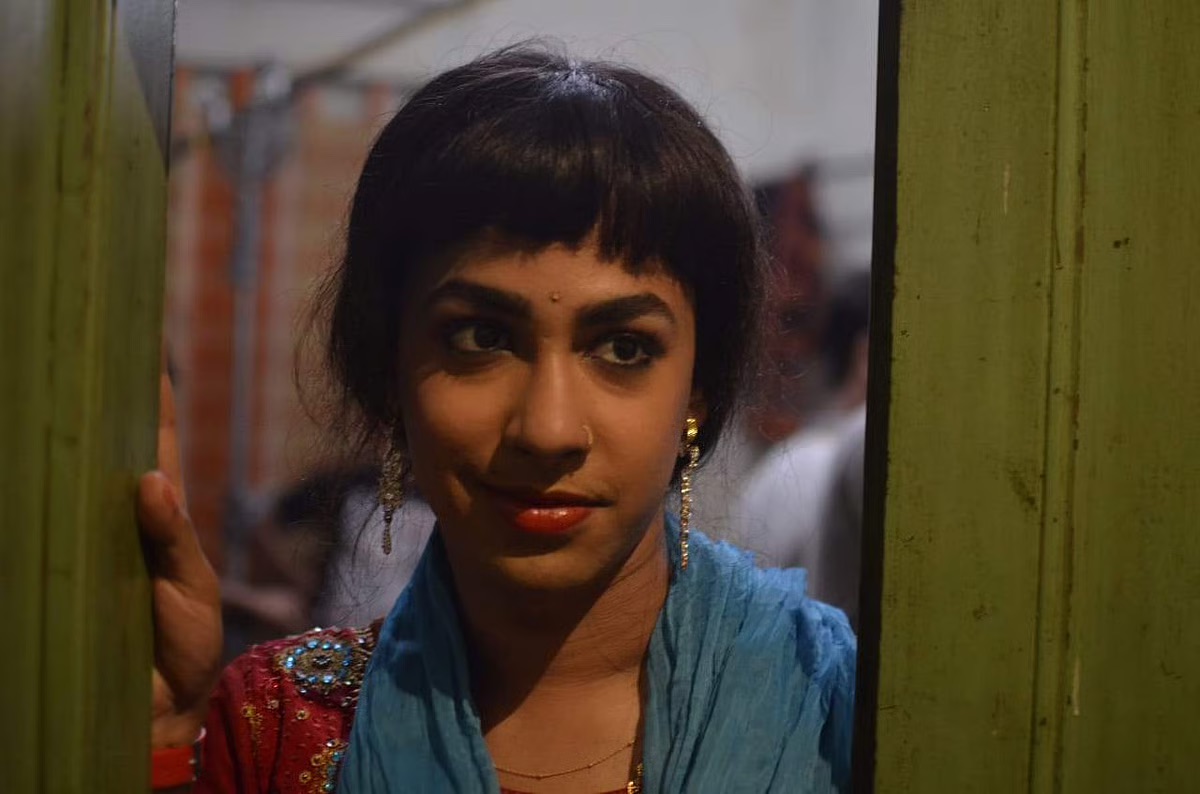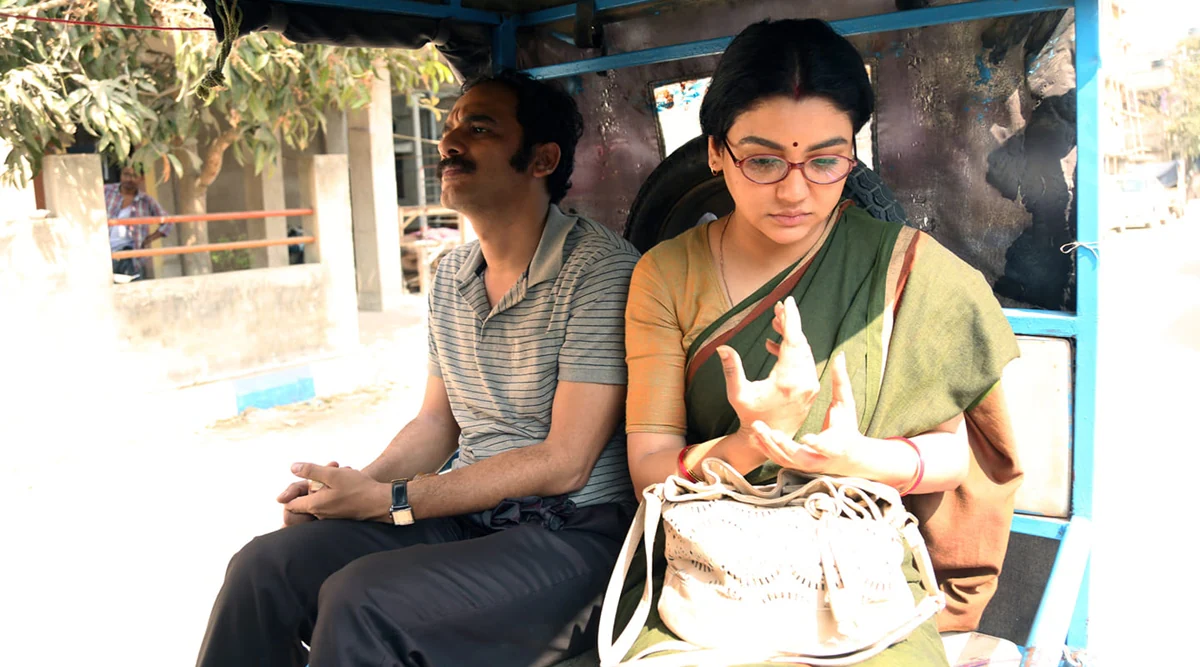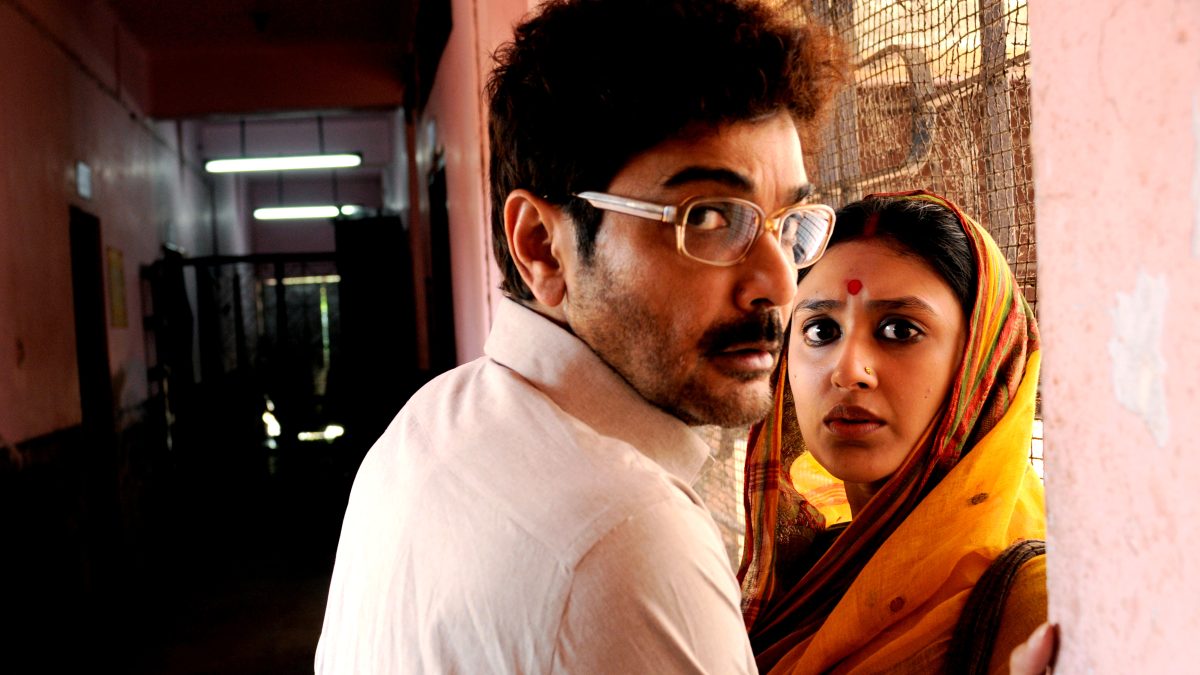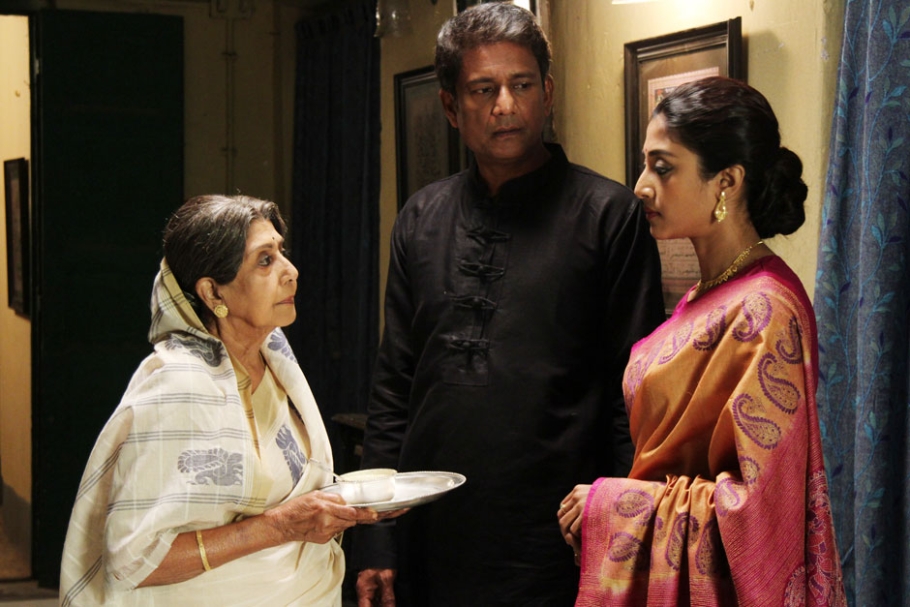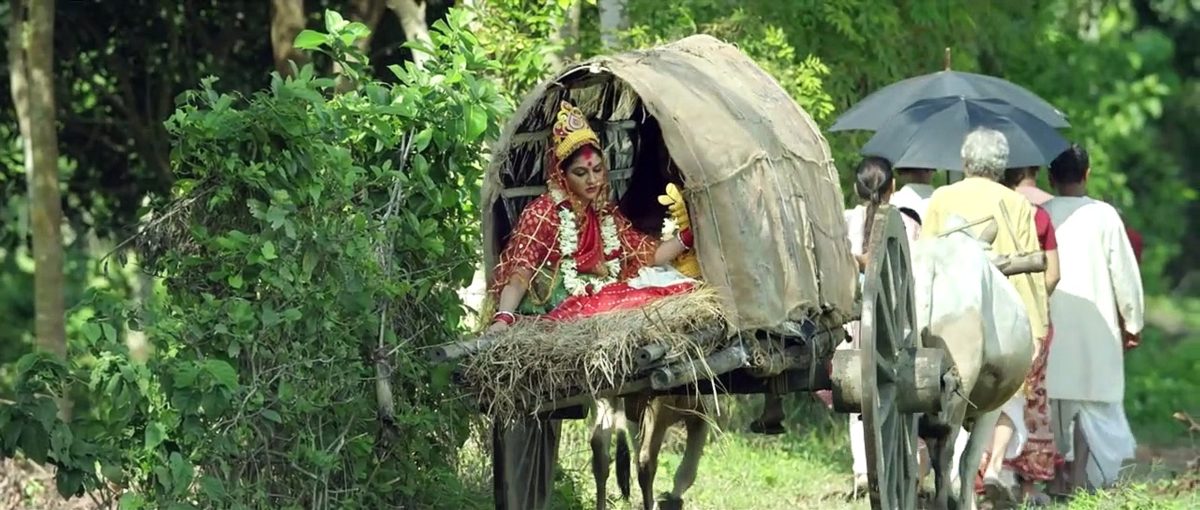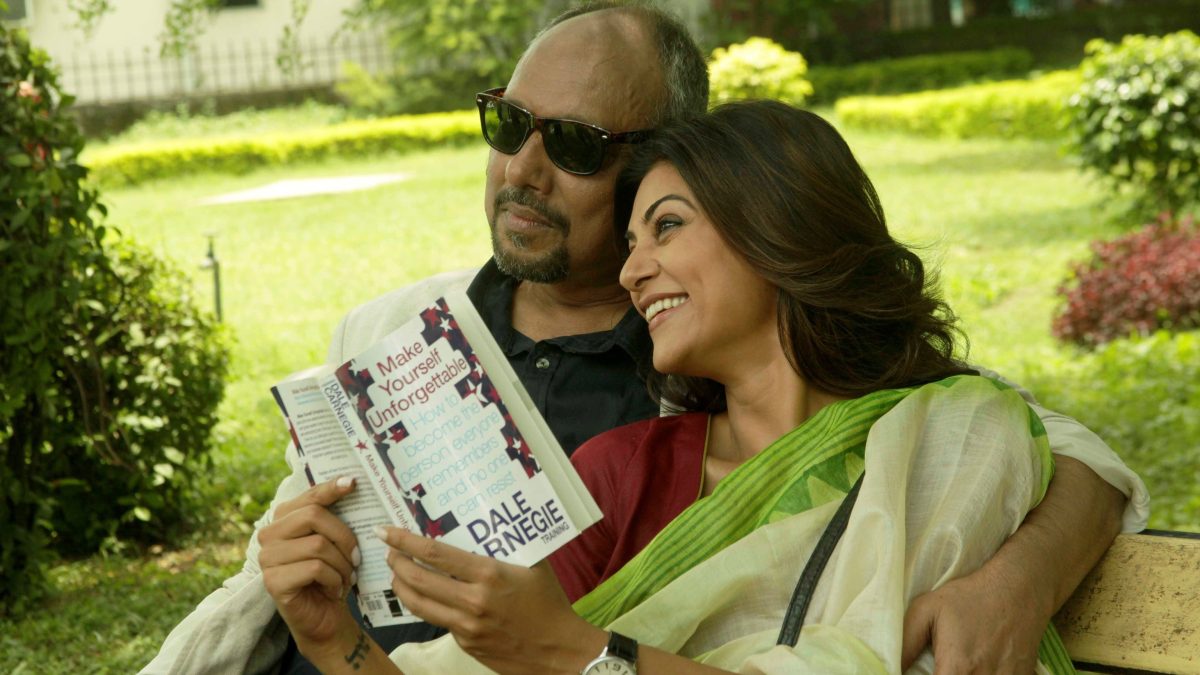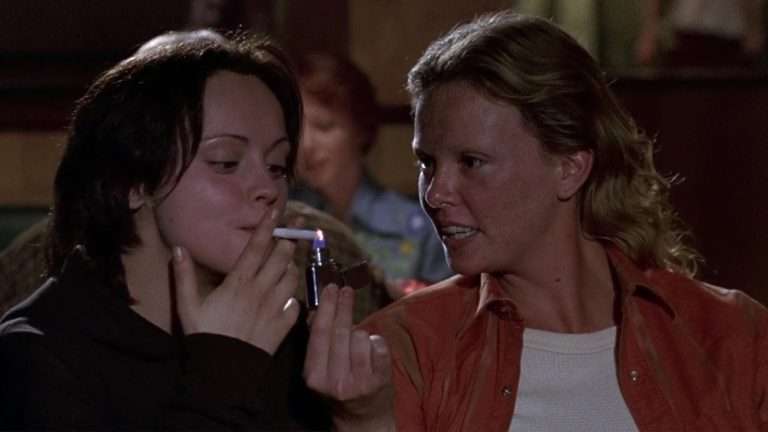Over the last decade, Bengali cinema has undergone a subtle yet profound transformation. Gone are the days when the industry’s artistic identity rested solely on nostalgia, literary adaptations, and the shadow of its giants. While the legacies of Ray, Sen, and Ghatak have remained central to the cultural psyche, the last decade has witnessed a shift toward cinema that is neither derivative nor reverential but self-aware, experimental, and rooted in a distinctly contemporary ontology, however momentarily.
This body of films articulates the anxieties of late capitalism, the fragility of identity, the precarity of labour, and the emotional exhaustion of a world oscillating between memory and survival. It is a cinema profoundly shaped by the aftermath of liberalisation, the erosion of ideology, and the opacity of desire in a world where narratives have lost their promise of coherence.
What unites these films is their philosophical aura: a refusal to simplify the complexity of the lived experience. These works challenge narrative expectations, destabilise conventional character arcs, and often privilege affect and atmosphere over plot. Silence gains narrative weight as the bodies transform into varied sites of conflict, in a city that becomes a protagonist rather than a location. The characters drift off into the world, and it has evolved beyond the frameworks that once guaranteed meaning. In this new cinematic language, longing supplants resolution, fragmentation replaces closure, and vulnerability becomes political.
This list is merely a catalogue of notable works, and also a map of a movement. Each film engages with history, identity, and social space in ways that resist commodification and exploitation. They do not exist as isolated artistic achievements; they converse with one another, with global arthouse sensibility, and with Bengal’s own cinematic memory. Together, these films mark a powerful and necessary reimagining of Bengali cinema – one that’s devoid of nostalgia, and defined by confrontation, reflection, and reinvention.
1. Nadharer Bhela (The Slow Man and His Raft) (2025)
Read: Nadharer Bhela (2025) ‘KIFF’ Movie Review: The Metamorphosis of Nadhar
“Nadharer Bhela” emerges as a film that resists the architecture of spectacle and narrative certainty, choosing instead to inhabit the silences, absences, and emotional textures that define the lived reality of its characters. In doing so, it articulates a cinematic philosophy rooted in observation rather than declaration. The circus, with its dust, its sweat, and its exhausted bodies, is framed as a site of a fragile economy of survival where the human body becomes both labour and commodity, disciplined and consumed by the invisible machinery of entertainment.
Yet what makes the film extraordinary is the way it refuses to flatten its characters into symbols. They are not embodiments of poverty, vulnerability, or marginalisation, but complex beings suspended between aspiration and exhaustion, tenderness and resignation. The emotional weight of the film emerges through the accumulation of gestures – a slowed breath before a performance, the quiet negotiation of dignity in moments of humiliation, glances that hold stories too heavy for speech.
Bhattacharyya’s filmmaking becomes almost anthropological, yet it remains grounded in reality. The camera chooses to watch with a steadfast empathy, never intervening, never beautifying for the sake of aesthetic pleasure, but allowing beauty to emerge from the persistence of humanity in spaces where it should logically decay. The songs woven into the narrative behave like musical interludes or sentimental cues, with the organic extensions of the characters’ inner worlds, functioning as memory, prayer, and emotional residue.
They linger, as though carrying the voices of the unseen generations who lived and were forgotten in similar margins. There is a profound slowness to the film, which is a deliberate political stance, as it refuses the capitalistic demand for pace, output, or narrative progression. It asserts that human experience is not reducible to climax and resolution. In its visual grammar, the film resists a polished look. The cinematography captures textures rather than images – the weight of air before rain, the heaviness of fatigue on skin, the fragile flicker of desire in a world where dreams feel almost irresponsible.
And yet, despite its bleakness, the film is not cynical. This ache becomes the ethical centre of the film, asking not for pity but for recognition: recognition that these lives are not anomalies but reflections of an economy that thrives on invisibility; recognition that the circus is not an exception but a metaphor for how society assigns value to bodies based on their capacity to entertain, labour, or endure.
What lingers after the film ends is a sense that something unguarded has been placed before the viewer, and that the act of witnessing it is not passive consumption but ethical engagement. Hence, it stands as one of the most quietly radical contributions to contemporary Bengali cinema, trusting the weight of silence, fragility, and patience to speak for themselves.
2. Once Upon a Time in Calcutta (2021)
Check Out: Once Upon a Time in Calcutta (2021): How to Survive in a Rapidly Changing Megalopolis?
Some films document a city, and then there are films like “Once Upon a Time in Calcutta” that listen to its pauses, its fractures, and its exhausted breaths. Aditya Vikram Sengupta’s work negates the narrativisation in the conventional sense, with the excavation of a city suspended between memory and mutation, a city burdened by its own mythology and yet relentlessly pushed forward by late-capitalist ambition. Kolkata is not framed here as a postcard of intellectual nostalgia, nor as the romantic ruin it is so often reduced to in cinema.
Instead, it exists as something deeply human – conflicted, weary, restless, and unsure of what parts of itself are worth carrying into the future. Sengupta crafts frames with a painterly mellifluousness, yet the beauty never feels ornamental. Every shot mourns something that has already disappeared or is in the process of disappearing.
Time becomes fluid and less a linear progression than a haunting. The past intrudes as a residue that refuses to be erased. In this sense, the film becomes an elegy: not merely for a child, a relationship, or an era, but for the version of Kolkata that once believed slowness was not a failing. That ambition did not have to be synonymous with abandonment, and that tenderness could coexist with survival.
What makes the film so piercing is its refusal to dramatise emotion. Instead of climactic confrontation, Sengupta offers quiet unravelings: a withheld sentence, a gaze that lasts a fraction longer than necessary, a gesture aborted mid-air. These small moments form the emotional grammar of the film, revealing how grief can become a private architecture in the form of silence, absence, and yet is impossible to escape. The pacing is deliberate, even punishing at times. Still, that slowness becomes the method through which the film articulates its truth: that healing, desire, reinvention – none of these occur quickly, neatly, or cleanly.
The city’s transformation ceases to be triumphant and is abrasive and uneven, marked by billboards promising aspiration to people who no longer recognise the landscape they were born into. The American-style housing complexes, the giant dinosaur facade, the intrusive real estate advertisements – these motifs of spectacle operate not as symbols of progress but as symptoms of erasure. They reveal a city that is trying to reinvent itself while refusing to acknowledge its wounds. And yet, beneath the melancholy, there is a quiet dignity of persistence, of searching, of refusing to accept numbness as a condition of survival.
3. Jhilli (2021)
Must Read: Neo-Kolkata Triptych? A Cinematic Inquiry into a Decaying Metropolis
“Jhilli” is a raw, disarmed, and profoundly unsettling encounter that makes us feel as if cinema itself has been stripped to bone and nerve. Shot in a world made of remnants of plastic heaps, forgotten waste, abandoned objects, it pushes the viewer into a space where civilisation’s leftovers become the architecture of existence, and human beings survive not at the margins but inside the margins.
The landfill in “Jhilli” functions as an ontology, and an ecosystem where discarded matter acquires the weight of memory, a mythology constructed out of what civilisation abandons, and a silent scripture written in rust, rot, and residue. Time, in this space, is stripped of progression. It curdles and lingers like a wound that refuses to close, fermenting in its own stillness until decay itself becomes a form of temporal logic.
The figures who inhabit this world are not framed as subjects pursuing aspirations or articulating inner worlds. They merely exist beyond the luxury of articulated longing. Language feels ornamental, something ornamental societies wield, and therefore something denied to those trapped in the machinery beneath progress.
This very film offers traces of gestures slipping into silence, glances weighted with fatigue rather than emotion, conversations that arrive half-formed and float away unclaimed, like fragments of a poem no one had the energy to finish. The camera, too, adopts this fractured grammar. It shivers, falters, pauses as if exhausted by the very act of witnessing. It is intimate without sentimentality, present without intervention, like an archivist of lives that the world would rather erase.
By refusing the polish and precision of conventional cinematic form, the film resists aesthetic comfort. It insists that beauty can reside in abrasion, and that meaning does not require structure to exist. In doing so, “Jhilli” becomes a space to be endured with an experience that lingers like the aftertaste of something real, something unsoftened, something the world usually hides.
What emerges through the grainy texture and handheld uncertainty is a portrait of urban labour abandonment that remains unseen, of bodies reduced to functionality, of lives that exist because someone else’s life needed to remain clean. And yet, buried inside the bleakness, there is tenderness: boys laughing after a struggle for scraps, a quiet moment by a fire, a cigarette shared not out of camaraderie but out of habit, and somehow, habit is saturated.
Nothing is resolved, nothing shifts, and perhaps that is the point. The world of “Jhilli” has no arc, no redemption, no transformation, and therefore, no illusion. When it ends, nothing has changed except the viewer, who now carries an uncomfortable truth that entire lives, full and beating, exist invisibly beneath the structures of progress we celebrate.
4. Nagarkirtan (2019)
While You’re Here: The 20 Best Regional Indian Movies of the 2010s Decade
“Nagarkirtan” insists, with a kind of mournful insistence, that cinema can still be an ethical act of witnessing. It refuses the easy consolations of melodrama and, instead, places the fragile architecture of queer life at the centre of its moral imagination, demanding that we attend to the ways in which desire, devotion, and violence are braided into everyday survival. Kaushik Ganguly’s film is at once intimate in its care for individual interiority and expansive in its refusal to confine that interiority to the margins of spectacle. Each shot is calibrated to honour the small, private economies of feeling.
The narrative follows bodies that have been disciplined by normative forces of family, religion, and caste, and shows how these bodies find, in one another, a tentative grammar of belonging. Yet the film is never sentimental about belonging. It recognises that tenderness in such contexts is always precarious, provisional, and haunted by the possibility of erasure. The film locates its queer subjects within real social geographies like marketplaces, alleys, and festive processions, thus refusing the ghettoisation of queer identity into either the reductive realms of pathology or the glossy arenas of triumphalism. Ganguly’s world is recognisably ordinary, and therein lies the film’s radicalism.
By normalising queer domesticity and its attendant conflicts, the film produces a necessary recalibration of empathy. It records ways of loving that are improvisational and infrastructural at once, practices that sustain life even as they risk annihilation. “Nagarkirtan,” therefore, refuses easy didacticism. Its pedagogy is aesthetic and affective rather than polemical.
The film asks gently and relentlessly: what does it mean to be seen, to be allowed to grieve, to be permitted to desire without shame? And in insisting on the dignity of its characters’ interiorities, the film issues a larger civic claim that a society’s measure is to be found in how it shelters its most vulnerable, not in how it polices difference.
Riddhi Sen’s performance, porous and brave, transforms what could have been a shorthand of victimhood into a rich, embodied subjectivity. His gestures, contained yet eloquent, render visible the slow accretion of shame and wonder that characterises a life lived in the interstices. Ritwik Chakraborty, as the film’s other axis of feeling, provides a steadiness that is neither saviour nor saint, but a companion whose solidity exposes the loneliness of the world the lovers must navigate. Together, they enact a love that is neither spectacle nor abstraction but a quotidian economy of small mercies: shared food, furtive touches, ritualised care, the language of ordinary domesticity that acquires radical valence when practiced against the grain of social expectation.
“Nagarkirtan” uses the aesthetics of restraint to insist on attention. Ganguly’s camera lingers on a face, a hand, the particular way light settles on a roadside shrine, so that the viewer is invited into patience rather than demand. Religious imagery appears as an iconography of condemnation and also as a complex field where sanctuary and sanction coexist, where hymns that promise salvation are also the very instruments that a society can wield to discipline difference.
This duality is crucial: religion in “Nagarkirtan” is neither villain nor refuge, but a force that shapes subjectivity, contorts language, and, at times, consecrates violence. The film’s violence is often structural and slow, insidious humiliations, verbal cruelties, micro-aggressions, yet Ganguly does not shy away from the eruptions of physical brutality that punctuate the lives of those who refuse to conform.
These eruptions are rendered with a terrible clarity, to titillate and expose the logic by which normative societies ‘correct’ aberrance. It is here that the film does its most ethical work by refusing to reduce suffering to spectacle. It compels the spectator to recognise their own complicity in the social architectures that render some lives perilous.
The film frequently substitutes tonal textures and devotional cadences for explicit exposition, allowing silence, song, and the murmur of streets to map interiority with an intelligence that dialogue often cannot reach. Cinematically, this creates moments of prayerful concentration with scenes that feel like liturgies, where feeling is administered slowly, insistently, almost sacramentally.
The film’s temporal economy likewise resists the neoliberal demand for closure, where scenes are permitted to breathe, to unfurl into minor gestures that accumulate into moral weight. In this sense, “Nagarkirtan” rehearses a politics of duration, with a rhetorical question of recognition of how trauma and tenderness are processes, never singular events.
5. Binisutoy (2020)
Read More: 20 Great Drama Movies of World Cinema
“Binisutoy” unfolds like a quietly unravelling parable about the porous boundary between story and life, a film that insists, through its patient orchestration of chance encounters and withheld revelations, that the narratives we tell ourselves are both refuge and trap. Atanu Ghosh’s film stages a deceptively simple premise: two strangers meet, exchange confessions, and leave with lives subtly altered, and from this slender scaffold, he constructs a meditation on loneliness, identity, and the moral economies of urban existence.
What is striking about “Binisutoy” is the way intimacy is manufactured out of ordinary gestures, as a cigarette passed, a bus missed, an anecdote offered as if by accident. These small transactions accumulate towards a moral suspense that asks us to interrogate the ethics of storytelling itself. The film constantly asks whether a lie told kindly is less dangerous than a truth told carelessly, and whether fiction might sometimes serve as a necessary prosthetic for a life that otherwise threatens to wither in the face of cash-register certainties and social invisibilities.
Ghosh resists tidy answers. Rather, he cultivates an atmosphere in which uncertainty becomes the primary effect. His camera prefers the intermediate spaces like bus stops, cafés, shared taxis, those liminal zones where people are technically together but emotionally unmoored. In these thresholds, their identities are negotiable, and memories are an accessory that can be donned or discarded depending on circumstance.
The performances become fields on which memory and fabrication fight for dominance, and the viewer is constantly asked to adjudicate between what is spoken and what is withheld. At the heart of the film is a curiously humane interrogation of deceit, a soft, benevolent fiction that people habitually tell to preserve selfhood or to grant another person temporary solace.
Ghosh situates such deceptions in relation to class and anonymity in a city where socioeconomic pressures compress private histories into manageable parcels. The impulse to alter or invent one’s past can feel less like a moral failing and more like an act of survival. Yet the film refuses moral simplification and acknowledges only that even small untruths have consequences, that the architecture of empathy can be undermined by the same gestures that once sustained it.
6. Shankhachil (2016)
Also Related: 10 Best Bengali Movies of the Last Decade (2010s)
“Shankhachil” unfolds with the calm certainty of a sorrow that began long before them, when Bengal was carved apart first in 1947 and then again in 1971. The film never treats the border as a line on a map. It feels like a wound that never healed. The river runs through the film like memory itself, restless and uneasy, as if grieving its captivity.
Houses along its banks crumble slowly, and their ruins feel like evidence of a time when people moved freely, and belonging was not something that needed proof. The Bangla spoken on both sides of the border is indistinguishable. Yet that same language becomes something one must justify through stamps, affidavits, and signatures, turning speech into evidence and identity into a negotiation.
When the schoolteacher takes his family across the border in search of medical treatment for their daughter, the crossing feels less like travel and more like stepping into a space where identity must constantly be performed. What makes the situation unbearably tragic is the way the natural world refuses to obey what humans have agreed upon. Birds glide freely across the sky, boats drift along age-old routes, and fishermen navigate the river without acknowledging checkpoints or barbed wire. The land itself seems confused by the idea of separation, almost questioning why humans insist on dividing what was once whole.
The family’s journey begins with hope, but slowly the story reveals how vulnerable ordinary people are when systems demand proof of existence. A single missing document can turn a citizen into an illegal body. The daughter at the centre of the narrative becomes more than just a child in need of treatment. She becomes a symbol of everything the border cannot contain. She belongs to both sides of Bengal, which means she is claimed by neither. Her playfulness, innocence, and strong belief in connection expose the absurdity of a world where identity depends on paperwork rather than memory, language, or emotion.
As her condition worsens, the river returns as if to bear witness, reminding us of what was lost and what still refuses to disappear. The tragedy is not only what happens to the family but the realization that love, belonging, and history collapse when placed before the unforgiving machinery of the state. The audience is left with a feeling that the border may exist in policy and maps, but the land, the river, and the people still remember a time when the world was whole, and that memory is its own quiet form of resistance.
7. Maati (2018)
Also Read: The 10 Best Adil Hussain Performances in Films
“Maati” unfolds like a slow excavation of a wound Bengal has never fully learned to name, a wound that began bleeding in 1947 when the Radcliffe Line was drawn in haste, without attention to language, memory, or belonging, and it sliced through centuries of shared culture and geography, turning neighbours into foreigners overnight and transforming home into something that could be lost simply by waking up the next morning.
The film carries this history as atmospheric inheritance, where the camera moves through spaces where partition is not narrated but felt, the houses remain locked because their rightful owners fled across a new border with keys still clenched in their palms, the fields are tilled by hands that know the soil but cannot claim it without proof, the family stories begin with “before” and silence swallows the sentence that should follow.
The narrative follows a middle-aged woman, her reluctant son, and the return of a figure from the past whose arrival pries open old wounds and forces a reckoning with what was left behind. The film begins in the present-tense mundanity of rural Bengal, involving the daily chores, funerary duties, and the small economies of village life, before the discovery of a grave and the persistence of an unclaimed name turns the domestic into an inquiry. As questions about lineage and ownership surface, the protagonists are drawn into a search that moves between memory and physical site.
Their search leads them to abandoned houses, archives, and graveyards that point to migrations, lost properties, and the bureaucratic amnesia that followed Partition. Sometimes the encounters feel hopeful, sometimes they feel like dead ends. But every interaction reveals how fragile memory becomes when history is shaped by displacement and loss. Through these experiences, the son, who at first treats the journey like a mere legal procedure, begins to understand the emotional weight behind it. His mother’s gentle and unwavering persistence slowly grounds him in the reality that this isn’t just about land but about belonging, dignity, and an identity fractured by borders.
The emotional arc of the mother and son relies very little on a dramatic catharsis, mostly on a gradual shift in posture, voice, and rhythm, exemplifying recognition rather than revelation. This is particularly important because the film engages with the history of Partition as a slow violence whose consequences persist across generations, even today. While many cinematic representations of Partition foreground mass displacement, communal violence, or historical trauma directly, “Maati” embeds these histories within intimate domestic actions.
The son’s journey becomes an embodiment of second-generation memory, a form of remembrance shaped not by lived experience but by inherited fragments, silences, and the bureaucratic reconstruction of identity. His arc critiques the assumption that history can be recovered through documentation alone. Instead, the film suggests that legal, spatial, or familial archives are incomplete, and that cinema becomes a space where affect, memory, and material evidence can coexist.
8. Jyeshtoputro (2019)
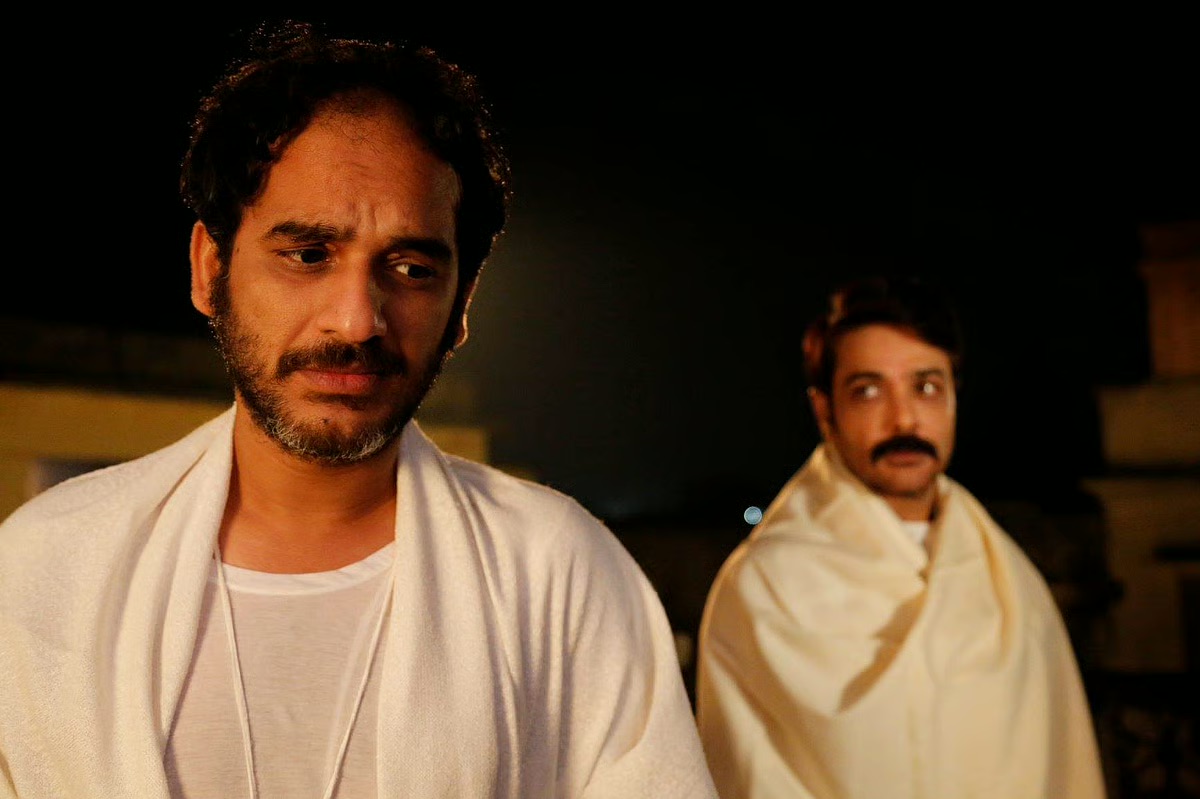
More Recommendations: 15 Indian Movies About Dysfunctional Families
“Jyeshtoputro” unfolds not as a conventional drama about a family reunion but as a meditation on hierarchy, loss, and the difficult inheritance of identity within a Bengali cultural imagination shaped by performance, reputation, and memory. The catalyst of the narrative is the death of the patriarch, yet the emotional centre is not grief in its conventional cinematic form.
Rather, it is the unsettling recognition that the father’s death forces an inventory of unresolved relationships, unspoken resentments, and the inequities that have shaped the family over decades. Into this tense emotional atmosphere walks the elder son – a film star, adored by millions and yet deeply estranged from his own family, whose return transforms mourning into a stage where authenticity and performance are constantly in negotiation.
The film places us inside a family that has spent years speaking through omission, where conversations feel like carefully handled objects rather than expressions, and where silence becomes a language more fluent than words. At the centre of this fragile space stand two brothers whose relationship has been shaped not by an event but by time itself. The younger brother has remained in the ancestral home and has carried the responsibilities that come with proximity.
This steady and often invisible labour of continuity emerges as the film’s moral axis. He represents the quiet reality of those who inherit obligation rather than ambition. In contrast, the elder brother returns as a cultural phenomenon, someone whose identity has become public property. His fame distorts him, and the home he returns to is unable to accommodate the magnitude of his public self.
This dynamic creates a deeply textured examination of recognition and erasure. The film interrogates what it means for one life to be celebrated while another remains unacknowledged, even though both originate from the same household and memory. The tension does not erupt into confrontation but becomes visible through small gestures, a look held too long, a question left unanswered, a memory recounted differently by each brother.
As the brothers navigate their father’s funeral rituals, the film meditates on the ethics of belonging. Who owns memory, the one who preserved it or the one who left and returned transformed? The rituals expose the distance between the public and private self, between performance and intimacy, between the idea of family and its lived texture.
9. Bishorjon (2017)
Related: Of Revelry And Reality: 10 Movies Centred Around Durga Pujo
“Bishorjon” is a story of love, borderlessness, and exile, and Kaushik Ganguly shapes the narrative with a tenderness that never lapses into sentimentality. The film is rooted in the borderlands between India and Bangladesh, a geography where history has carved wounds into ordinary lives and where the line on a map becomes more powerful than memory, community, or affection.
The story follows Padma, a widow living in a remote village near the Ichamati river, whose life is governed not by large events but by the slow repetitions of survival. When she discovers Nasir, a Muslim man from across the border who washes ashore after an accident during immersions, her world shifts almost imperceptibly. At first, the relationship appears pragmatic, founded on necessity and circumstance rather than desire. Yet as the narrative progresses, the emotional texture deepens and grows layered with unspoken longing, hesitation, and the fear of the inevitable separation that shadowed cross-border relationships after Partition.
The landscape itself becomes a character in the film, marked by still waters, monsoon silence, and unnamed grief. This quiet world mirrors the emotional restraint between the two protagonists, making their smallest interactions feel momentous. Ganguly avoids melodrama and instead invites the viewer into a space where intimacy is built through shared labour, quiet conversations, and the fragile trust between strangers who do not know whether they belong to the same home or to two nations that history forced apart.
As the plot evolves, the film begins grappling with the consequences of longing in a world structured by boundaries. The border is not simply a site of political authority. It becomes a metaphor for the limits placed on connection, identity, and choice. The love between Padma and Nasir grows not through grand gestures but through pauses, hesitations, and the vulnerability that comes with letting another person in.
Their story recalls the emotional register of stories by Mahasweta Devi, yet Ganguly never allows the narrative to collapse into an archetype. Instead, he reminds the viewer that the tragedy here is not forbidden romance but the bureaucratic architecture that governs who may belong to whom. The supporting characters reinforce this structure. The village priest, the neighbours, and the silent river function as witnesses rather than participants, reflecting a world that silently observes love but rarely protects it.
10. Nirbaak (2015)
Also Check Out: The 5 Best Bengali Movies of 2024
“Nirbaak” exists as one of those rare films in Bengali cinema where narrative is built from the silence that fills the spaces between lives, objects, and desires. Srijit Mukherjee constructs the film as a quartet of interconnected stories, each orbiting around a man whose presence becomes the gravitational centre for human longing, animal instinct, and the haunting tenderness of unspoken emotion. The structure of the film is unconventional, yet it never feels experimental merely for the sake of novelty. Rather, silence becomes the primary mode of communication, and the film treats every pause, every withheld word, every unspoken ache as a kind of emotional grammar.
One of the most unsettling and unforgettable moments in “Nirbaak” is the necrophilia scene, and the film handles it in a way that refuses sensationalism. The morgue attendant stands beside the corpse, and for a long moment, nothing happens. The room is cold, fluorescent, clinically indifferent. Yet his expression betrays something disturbingly tender, almost reverential. He touches the lifeless body with hesitation, as though seeking permission from silence itself. The camera does not rush. It lingers, almost meditatively, forcing the viewer to sit with the discomfort instead of escaping it.
In that stillness, the scene transforms. It stops feeling like an act of aberration and begins to resemble a tragic confession of loneliness. The dead body cannot reject him, cannot judge him, cannot abandon him. What should be grotesque becomes a portrait of extreme isolation, a moment where desire collapses into grief and longing becomes indistinguishable from despair.
Seen this way, the scene is not about the act itself but about what drives it. The morgue attendant, like every other character in the film, is trapped in a world where words fail, and connection feels impossible. His desire finds expression in the only place where response is impossible. In that grotesque intimacy, the film makes us ask whether desire is inherently human or simply a force that exists beyond categories of moral and immoral. This moment echoes the existential desperation found in Camus’s universe, where human beings cling to meaning in a world that is indifferent, mute, and unreasonably alive.
In its refusal to explain itself plainly, the film aligns itself with modernist literary tradition, and nowhere is this more apparent than in the opening sequence, where Anjan Dutt’s character sits alone in a park on his birthday, eating cake by himself, and later standing at the door of a bathtub accident.
When Anjan cuts his cake and spreads cream across his face as if with a partner who isn’t there, what is being shown is a sense of deeper solitude, the absence of an “other” who anchors identity. Instead of dialogue explaining his loneliness, the world around him takes over: the empty bench, the silent party, the unnoticed gaze. What lies visible is minimal yet charged, and the bulk of emotion sits submerged. The film thus uses silence and omission not as gaps but as vessels of meaning, inviting the audience into the space of what is withheld, just as Hemingway invites the reader to sense what lies beneath the visible prose.
As the story shifts, the film becomes increasingly playful and peculiar, moving away from realism and toward a more metaphorical exploration of affection, obsession, and memory. One character speaks not with words but with her attachment to objects, especially a mirror that becomes a site of intimacy, confession, and vulnerability.
Another character inhabits a world where love becomes entangled with absence, and the longing that fills the film begins to resemble the melancholic spaces of Tagore’s poetry. What makes “Nirbaak” compelling is that its silence is never emptiness. Instead, it becomes a medium through which interiority is revealed, and every pause, gaze, and slow movement becomes a form of narrative expression.
By the time the final sequence arrives, the film makes it clear that it is less interested in resolving stories than in exploring the emotional residue left behind. The love between humans and animals, the attachment between a woman and her reflection, the yearning of individuals trapped inside the demands of routine, all coalesce into a meditation on the impossibility of articulating certain forms of longing.
The narrative hence leaves the viewer suspended in the same emotional ambiguity that shapes the characters’ inner worlds. In this refusal to explain itself, “Nirbaak” becomes a film about the emotional weight of silence, about the necessity of spaces where speech cannot follow, and about the quiet yet undeniable truth that the deepest connections often exist outside language.


